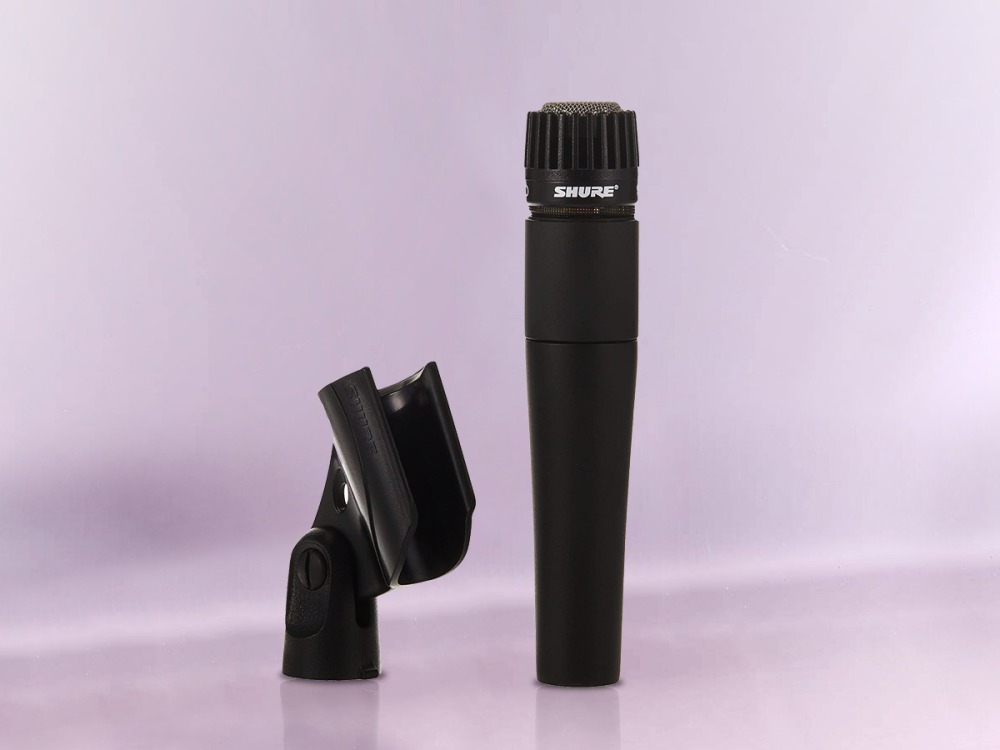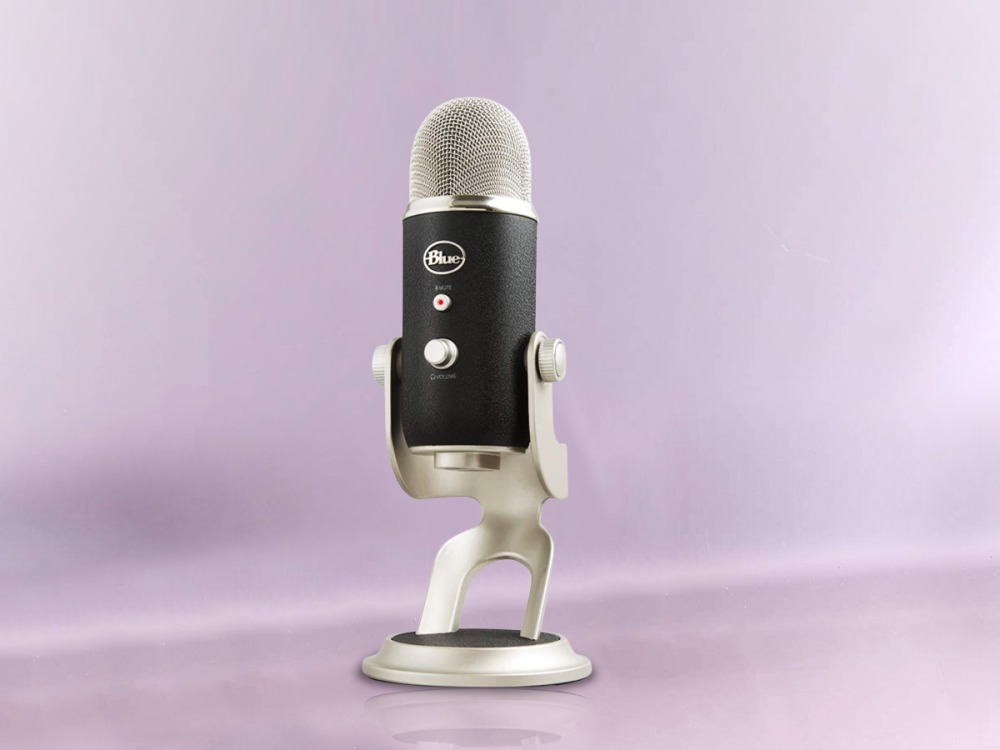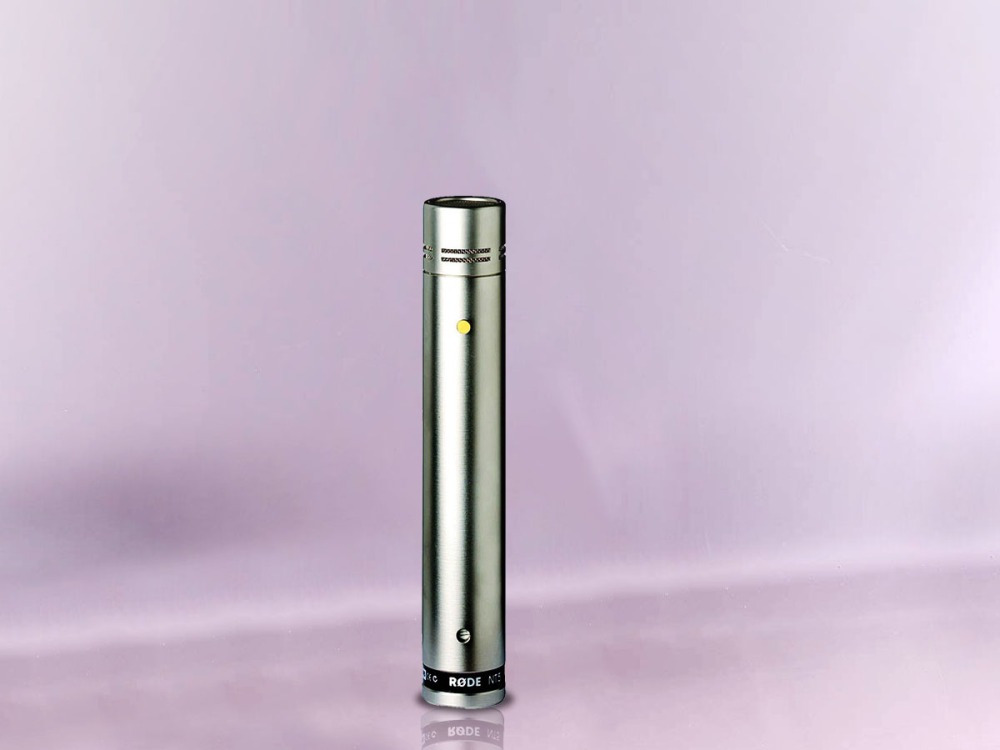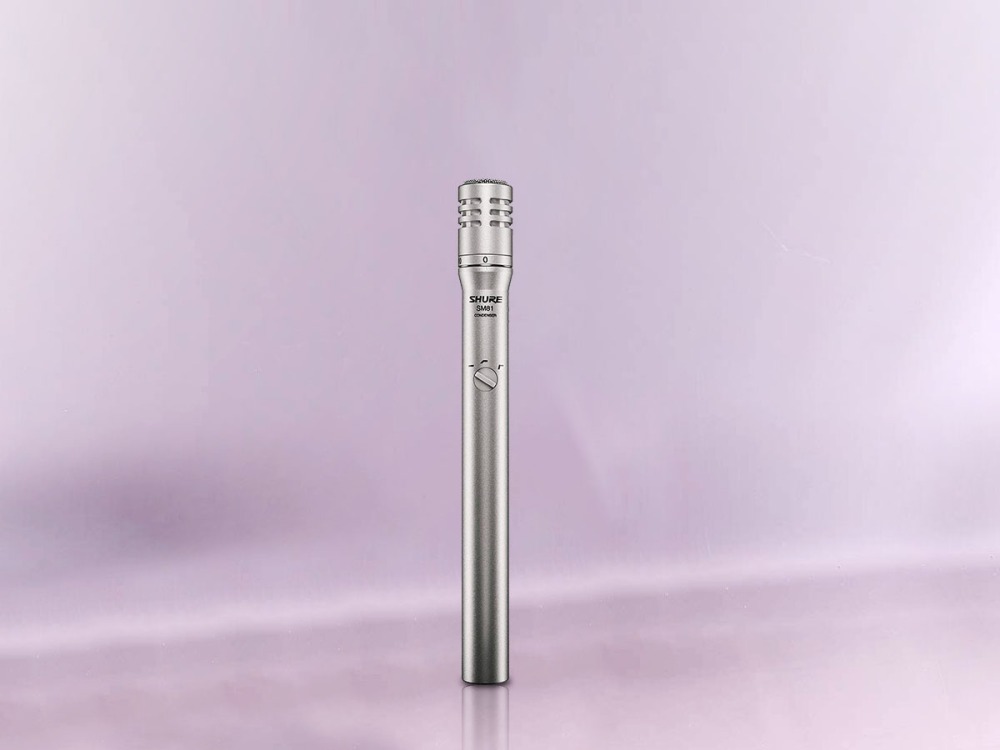Choosing the right product, regardless if it comes to the best microphones for acoustic guitars or not, isn’t the easiest thing in the world. In fact, you have to have the knowledge, be informed, and know exactly what are you looking for.
There are multiple types of microphones, and all of them aren’t specifically made for recording the sound of your acoustic guitars, and what often happens is that people are in a rush and they just get the microphone that has a label ” suitable for guitars”, and once they start recording, they immediately regret that decision. The reason is very simple, although most of them are suitable for guitars, still, what about the quality?
That’s why, after an in-depth analysis, I’ve gathered the best microphones for acoustic guitars, and I’ve listed each of them by its price tag, so that depending on your budget, and the quality you search for, you can easily make your choice!
Table of Contents
Our Acoustic Guitar Microphone Picks
5. Shure SM57

The Shure SM57 is a budget-friendly, cardioid dynamic microphone that is widely used by the aspiring musicians/singers who want to keep tight on budget, while looking for a quality microphone. Although this is a dynamic microphone, still, it is highly suitable for recording audio released by acoustic guitars, and even drums!
To begin with, the design. The SM57 boasts an elegant, yet rugged construction that does not look nor feel cheap, in fact, it is very durable and for the price you pay, you can’t expect more, mainly because of the fact most of its part are replaceable!
In addition, this model is available in 2 versions, including the one which lacks cable, and the second, XLR-to-USB adapter. Even though I’m currently reviewing the cheaper, without cable version, feel free to switch if you ask for more.
When it comes to the performance, the SM57 has a frequency response that stretches from 40-15,000 Hz, and employs a uniform cardioid pickup pattern which offers numerous advantages, and one of them is ensuring an excellent isolation, which is done by reducing background noise, so that the sound of your acoustic guitar/other instrument can be caught properly!
I would also like to add that, if you find yourself in an open environment where you have to play, users have reported to me that the SM57 is actually less prone to wind noise, of course, it may capture here and there, but in general, considering its price tag, this unit does its job perfectly fine!
Last but not least, since this is a very popular microphone, feel free to watch some videos where people are using this microphone in order to record sound from their acoustic guitars, so that you can assure yourself and have even better insight.
To conclude, if you’re looking for a combination of cost-efficiency and quality, then you’ve come to the right place – the Shure SM57 is exactly this
4. Blue 1967 Yeti Pro

The Blue 1967 Yeti Pro is a highly versatile microphone which is exclusively engineered to satisfy the demands of the most skilled singers, acoustic guitarists, etc. If you’re singing while playing acoustic guitar, then let’s see what does this microphone has to offer!
Speaking of the design, the 1967 Yeti Pro does really look premium. Starting from its rough, whole metal body which literally can’t be flexed, and all the way up to its black finish and copper buttons that do give an absolutely classy touch and feel!
Furthermore, this unit is supported by a circular and sturdy stand that will let you make tilt and height adjustments while ensuring that the mic will always stay in place, and as a proof, you easily notice the three thick foam pads that are set on the base.
Since I’ve started reviewing this product by mentioning “versatility”, let’s briefly explain what’s so special about it.
For your information, the Blue 1967 Yeti Pro comes with three custom condenser capsules and four polar pattern settings including Cardioid, Stereo, Bidirectional and Omnidirectional, hence, depending on your preferences, you can use this mic and leave the rest to it!
Moreover, this mic comes armed with a built-in headphone amplifier that ensures zero-latency monitor with a signal to noise of up to 114dB. If you’ve been asking yourself regarding the frequency, the Blue 1967 Yeti Pro’s frequency response is between 15 Hz – 22kHz, and let’s not forget that this unit can achieve 24-bit/192kHz digital recording resolution by using analog XLR output!
Overall, I strongly recommend you consider the Blue 1967 Yeti Pro as your next purchase, and if you ever decide to purchase it, you will surely understand what makes this unit stand from the others
3. Audio-Technica ATM450

The Audio-Technica ATM450 is a small-diaphragm, condenser microphone that can ensure proper audio recording for acoustic guitars, drums, bass guitars, piano, and more, and therefore, this is only a small percentage of its tremendously good capabilities!
Aesthetically speaking, the ATM450 utilizes a so-called side-address stick design, which means that this microphone will offer you endless placement options, so that it can drastically ease your experience.
Additionally, this unit comes with an isolation clamp of which you can take advantage and have a truly convenient and secure mounting on one hand, while on the other, you can position this mic exactly as you’d want without dealing with unwanted mechanical noise like is the case with some microphones on the market.
In terms of the performance, the ATM450 is indeed strong, due to the fact that it incorporates an 80Hz hi-pass filter whose purpose is to make sure that switching from a flat frequency response to a low-end roll-off will be done in a professional manner, so you shouldn’t worry literally about anything. In addition, the manufacturer didn’t stop here, but instead, Audio-Technica has implemented a switchable 10 dB pad with the intention to lower the microphone’s sensitivity, by offer you a flexible use and a higher SPL capability so that you will never feel restricted in using this mic!
Another great thing about this model is that the ATM450 will unlikely pick upsides that come from the sides or rear, and the reason behind this is its Cardioid polar pattern that promises high-level of isolation with the intention to let you have the “perfect” sound source for your ultimate user experience!
Finally, according to those who have been using this mic, the ATM450 does an amazing job in recording amplified acoustic instruments and honestly, I have to admit that the manufacturer did an amazing job here!
In conclusion, the Audio-Technica ATM 450 deserves your attention, and if you ever decide to purchase it, you will unlikely regret that decision because this mic has all it takes to keep you more than satisfied during your music sessions!
2. Rode NT5

The Rode NT5 is specifically designed to be used for recording acoustic instruments and live performances, and I’m sure that you’ve seen this microphone popping up numerous times on the Internet as you were searching for the best microphones for acoustic guitars. Well, now, you will find out why is this microphone so popular!
Design-wise, the NT5 packs a heavy-duty, satin-nickel-plated body that is accompanied by a gold, sputtered 1/2″ capsule, and a tight cardioid pickup pattern that does a fantastic job in bringing the best audio quality to your acoustic instrument.
One of the reasons that led users to consider or use this microphone is that this unit can easily withstand a higher sound pressure level, and at the same time, this mic has a lower self-noise and lower impedance, both of these things are crucial because the NT5 can serve you really well in both studio, and live events!
Moreover, since you will probably play with an acoustic guitar, I would like to inform you that the NT5 provides an exceptionally even sound, by “even” I want to say that this unit captures low mids and bass frequencies pretty evenly, and I think that you will be very satisfied with such a quality mic.
Aside from recording acoustic guitars, if you’re a person that has knowledge of other instruments, including flute, saxophone, or drums, you can also benefit a lot by having the NT5, and when we combine all these things into one, I can easily say that the Rode NT5 is indeed a fascinating mic that can satisfy the needs of a wide variety of different musicians.
To summarize, the Rode NT5 is a must-have product for everyone who is looking for a quality, condenser microphone that can get the best out of your acoustic guitars, and from other instruments, thanks to its absolutely strong capabilities!
1. Shure SM81-LC

The Shure SM81-LC is surely one of the best, if not the best microphones for acoustic guitars, and the reason is very simple though, since this mic can withstand regular and studio use for a long period of time, while on the other side, its characteristics are good enough to ensure exclusively rich performance with other acoustic instruments such as piano, cymbals and more! In other words, this mic is simply synonymous with quality and versatility!
From a design perspective, the SM81-LC features an elegant and slim construction that make this mic be perfect to sit close to your acoustic guitar/piano/cymbals, since it can easily capture the sounds and get the best possible results. Also, considering the fact that I’m talking about a mic with a very slim body, the other benefit of having this mic is that you will be able to capture sounds in stereo recording without any problem at all!
Moving on, the SM81-LC has a one-directional, cardioid pattern as well, and what’s cool about it is that you shouldn’t worry about unwanted or unnecessary recordings at all, since this mic has you completely backed up with everything.
Another great thing about this unit is its flat response, if you’re a beginner who doesn’t really have a clue what does this mean, I will try to keep things simple. A flat response microphone will record the sound of your instrument exactly like it is and like it should. In other words, the audio will be the real representation of the tones heard in studios!
Furthermore, if you’ve been curious regarding the frequency response of this mic, well, I will tell you two things. The first is that its frequency response is between 0 Hz – 20kHz, whereas, the low-frequency response is selectable and you can choose between flat, 6 or 16dB( the last is basically an octave roll-off).
In the end, there’s yet another thing worthy of mentioning, and that’s regarding the power requirements of this microphone. Namely, this unit requires phantom power to function properly, and at the same time, you would need cables. I’d suggest you have at least a 48-volt phantom power source in order to get the best possible results of the mic, anything less may not give you the best performance.
So, what are my final words? I would recommend you seriously consider the SM81-LC, especially if you’re playing on an acoustic guitar or other acoustic instruments, due to the fact that this mic is durable and performs good enough to help you get the best possible sound out of your instruments!
Buying Guide
What happens with a dynamic microphone is that the audio signal is generated by the motion of conduction, and everything is done within the magnetic field. These microphones are less sensitive than the condenser ones which basically means that even if you make a mistake while playing guitar, the audience may unlikely notice it at all.
Types
Dynamic Microphones
What happens with dynamic microphone is that the audio signal is generated by the motion of a conduction, and everything is done within the magnetic field. These microphones are less sensitive than the condenser ones which basically means that even if you make a mistake while playing guitar, the audience may unlikely notice it at all.
Condenser Microphones
They are the most common type of mics which is used especially for recording the sound released by an acoustic guitar. Design-wise, they are simple ( but more complex than dynamic ones), and employ a thin, and stretched conductive diaphragm which is set next to a backplate. The advantages are numerous, starting from the fact that they are light and compact, are good enough to get a flat frequency response and can capture extended frequency ranges.
USB Microphones
USB microphones are the result of the “latest” development in microphone technology, however, they are still based on the well-known, traditional elements of a microphone including diaphragm, capsule, etc. The biggest advantage regarding them is that they are easy to use, since they make mobile digital recording by a simple plug, and once you’re done, you can turn on your DAW software and start recording.
Ribbon Microphones
This type of microphone can be considered as the first commercially successful directional microphones, and also, that are specifically designed to handle daily and strong studio use.
Polar Patterns
- Omnidirectional – Omnidirectional microphones are known for their ability to detect sound that comes from all directions in a fairly equal manner, hence, these microphones are superb for capturing room sound, regardless if you’re playing on an acoustic guitar or not.
- Cardioid – These microphones are among the most widely used types of microphones, and they are often used in studio and live purposes, because they are excellent for multi-miking situations.
- Super cardioid & Hypercardoid – Let’s make things clear. A super-cardioid pattern is way more directional than cardioid, whereas, as the name suggests, hyper-cardioid is even more directional than super-cardioid. What’s interesting about the super-cardioid pattern is that they can pick up sound from their sensitive rear lobes, and honestly, they are a bit harder to position.
Prices
Price has a huge role in making an actual purchase, and the reason is simple, the higher the price tag gets, the more quality you can expect from it. If you’re a beginner or an intermediate, I’d suggest you keep tight on budget, and as your skills grow, then trust me, you will be obliged to get a more expensive microphone because you will seek for a better sound reproduction/recording, etc.
Frequently Asked Questions (FAQ)
Q: How can I get the best sound out of my acoustic guitar?
A: There are multiple ways that will lead your way to achieve this. For instance, It is preferable that you use a condenser mic, also, you should avoid too much bass, if possible, change your strings once you notice that they aren’t as quality as before, record in stereo, etc.
Q: What is the best microphone for recording both, vocals and sound of acoustic guitar?
A: Although there isn’t a precise answer to this question, since there are numerous microphones which are highly suitable for this purpose, the most precise answer you can get would be the microphones included in this article.
Q: What is a condenser microphone?
A: Condenser microphones are the most common type of microphones that can be found in studios. What makes them different from the others is that they are strong enough to capture larger frequency and output quality transient response, which in practice means that they can reproduce the speed of a specific instrument or voice. Also, they are known for having louder output, however, keep in mind that they are also sensitive to loud sounds.
Q: How would I know which microphone would be highly suitable for my acoustic guitar?
A: Well, here, I can give you a precise answer right away. Always look for condenser microphones.
Q: Are dynamic microphones good alternative?
A: No, they aren’t. This is because they are insensitive on one side, while on the other, their high-frequency response isn’t as quality in comparison to condenser ones.





